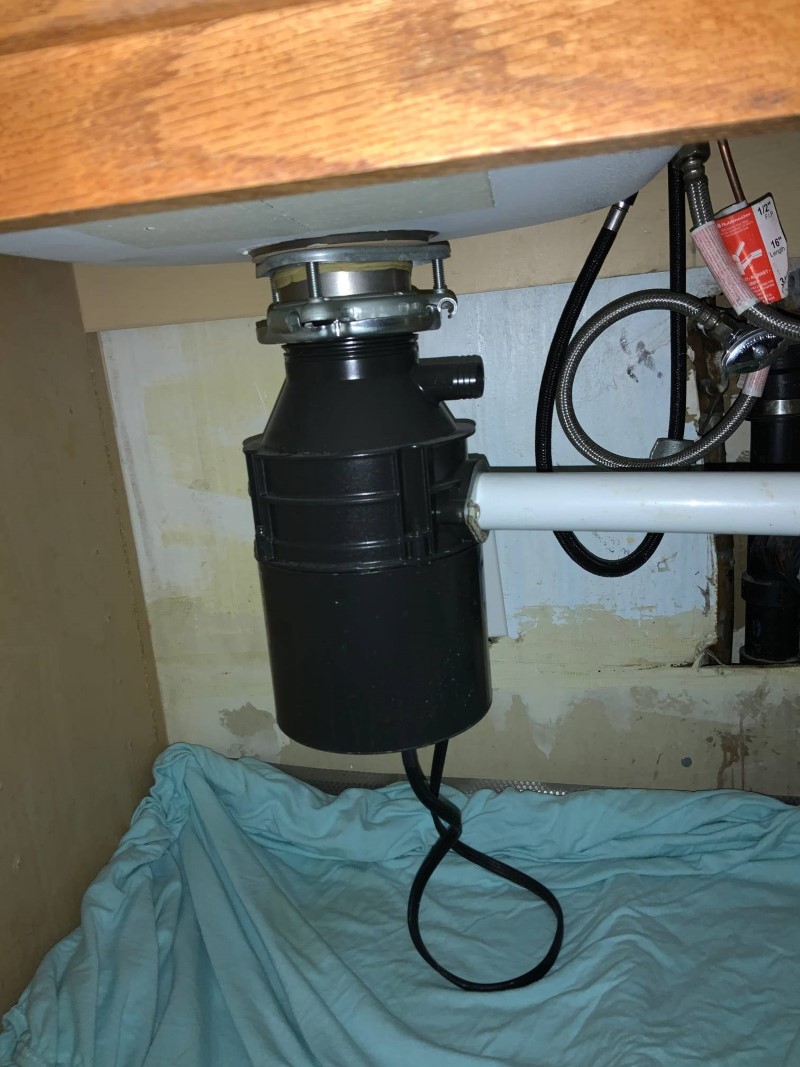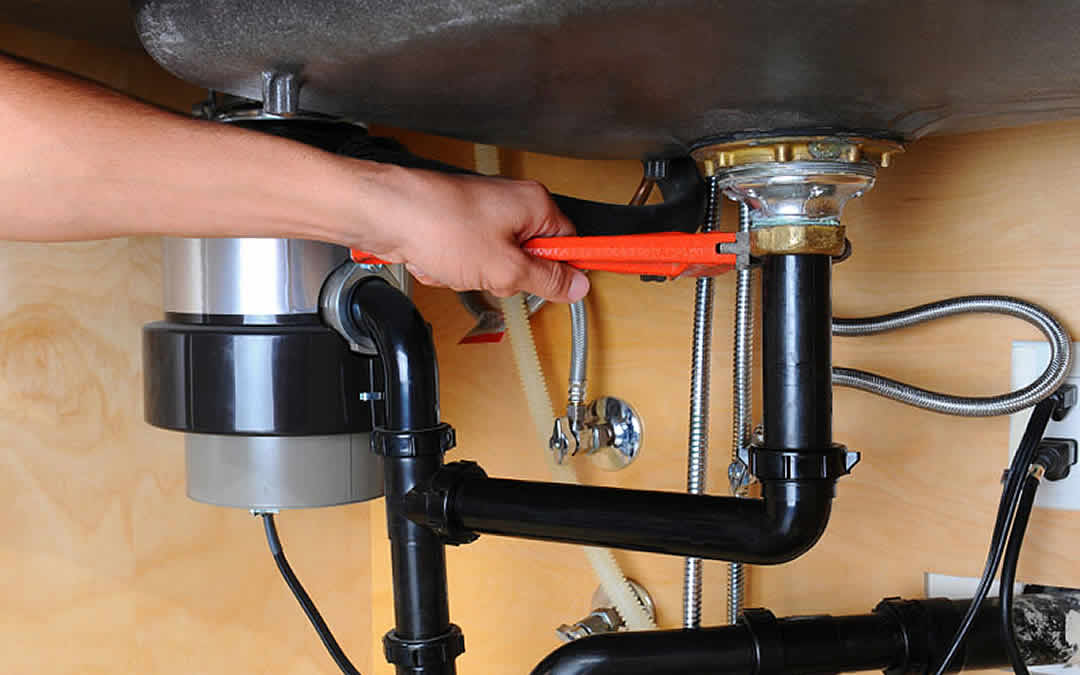Tested Solutions for Fixing a Dripping Garbage Disposal
Tested Solutions for Fixing a Dripping Garbage Disposal
Blog Article
Have you been interested in details about Garbage Disposal Leaking From Bottom?

Garbage disposals are important kitchen area devices that help in throwing away food waste efficiently. However, a dripping waste disposal unit can be a frustrating and unpleasant trouble to take care of. Thankfully, many leakages can be fixed conveniently with a couple of simple actions. In this short article, we will certainly go over how to take care of a leaking waste disposal unit properly.
Introduction
Waste disposal unit are installed under kitchen area sinks and are made to shred food waste into smaller sized items, allowing it to go through the pipes system conveniently. While these tools are generally trustworthy, leakages can occur in time because of damage, loosened links, or damages to the device.
Step-by-Step Guide to Repairing a Leaking Garbage Disposal
Switch off the Power
Prior to trying any type of repair services, make sure that the power to the garbage disposal unit is turned off to stop the danger of electric shock.
Find the Leak
Determine the exact place of the leakage and identify the reason
Tighten Connections
Utilize a wrench to tighten any type of loosened connections between the disposal device and the plumbing system.
Change Seals or Gaskets
If the leak is due to used seals or gaskets, remove the old elements and change them with brand-new ones.
Patching Splits or Holes
For fractures or holes in the disposal system, use epoxy or an ideal patching product to seal the damaged location.
Identifying the Resource of the Leakage
Before trying to repair a leaking garbage disposal, it is essential to identify the source of the leakage. This can normally be done with visual evaluation or by carrying out simple tests.
Visual Inspection
Check the waste disposal unit system thoroughly for any signs of water leakage. Pay attention to locations around seals, gaskets, and link factors.
Evaluating for Leaks
One way to test for leakages is by running water with the disposal system and checking for any noticeable signs of leakage.
Usual Sources Of Leaks in Trash Disposals
Worn Seals and Gaskets
Seals and gaskets play a vital duty in avoiding water from dripping out of the garbage disposal. Gradually, these components can deteriorate, leading to leaks around the disposal unit.
Loose Connections
The links in between the waste disposal unit and the pipes system can become loose in time, causing water to leak out during procedure.
Cracks or Openings in the Disposal Device
Physical damage to the garbage disposal, such as splits or holes in the housing, can likewise cause leakages.
Devices and Products Needed for Repairing a Leaking Waste Disposal Unit
Before beginning the repair process, collect the necessary devices and materials, including a screwdriver, adjustable wrench, plumbing's putty, substitute seals or gaskets, and epoxy or patching product for fixing splits or holes.
Checking the Garbage Disposal After Repair Service
When the repair service is complete, test the waste disposal unit by running water through it to make sure that the leak has actually been solved.
Preventive Maintenance Tips to Prevent Future Leakages
To stop future leakages, it is necessary to do regular maintenance on your waste disposal unit. This includes maintaining it tidy, avoiding putting non-food items or tough objects down the disposal, and regularly checking for leaks or various other concerns.
Verdict
Finally, dealing with a leaking waste disposal unit is a reasonably uncomplicated procedure that can be finished with standard tools and materials. By following the steps laid out in this post and exercising precautionary upkeep, you can keep your waste disposal unit in good working condition and prevent expensive repair work in the future.
What to Do About a Leaking Garbage Disposal
A leaking garbage disposal often goes unnoticed until you confront a sopping cabinet, a foul-smelling puddle, or an audible drip-drip-drip from the unit. The fix can be frustrating, too, because the leak can stem from a number of components in the system. Fortunately, with a little sleuthing, you can zero in on the leak and—depending on the exact location—stop the icky oozing and repair the component that caused it. Worst case scenario, if it turns out that the garbage disposal must be replaced, installing a new one is a reasonable do-it-yourself task for those with basic plumbing skills. Read on to keep the cash you’d otherwise hand over to a pro.
Prepare to find the leak
Prior to testing the garbage disposal for leaks, unplug it at the wall outlet and turn off the power from the breaker box to prevent electrical shock. Then insert a watertight sink stopper into your sink drain and wipe the unit dry with a clean cloth. In any handy container, mix a few drops of food coloring into a few cups of water, and pour the dyed water onto the sink stopper to help you locate the leak.
Investigate the source
the top, where the disposal meets the sink drain the side, where the dishwasher hose or main drain pipe connects to the disposal or the bottom of the unit Inspect each of these locations while gliding a light-colored rag over the unit; the dyed water will readily show on the rag and reveal the location of the leak. If a leak isn’t immediately apparent, remove the sink stopper and pour a few more cups of dyed water down the sink drain, then check for leaks again. Leaks near the top of the unit are more likely to show themselves while the sink is plugged, while side and bottom leaks are more noticeable while the sink is unplugged.
The metal sink flange that sits directly inside the sink drain is typically sealed around the top with plumber’s putty (a clay-like sealant) and then secured from under the sink with bolts. If the plumber’s putty deteriorates, or the bolts loosen, the flange can no longer form a watertight seal between the sink drain and the disposal—which could cause a leak at the top of the unit.
To reseal the leaky flange, you must first detach the garbage disposal. Start by loosening the screws securing the main drain pipe to the disposal, then loosen the screws in the metal clamp securing the dishwasher hose to the disposal and detach the drain pipe and dishwasher hose from the disposal. Loosen the screws in the mounting ring that connects the disposal to the metal mounting assembly beneath the sink, then pull down the disposal and carefully set it on a clean, dry surface. Loosen the bolts in the mounting assembly with a wrench, then pull down the mounting assembly and set it near the disposal.

As a devoted person who reads about The Handy Guide To Fixing Your Garbage Disposal Leaking, I imagined sharing that piece of content was really helpful. Enjoyed reading our article? Please share it. Let others discover it. I praise you for your time. Come back soon.
Book Now! Report this page